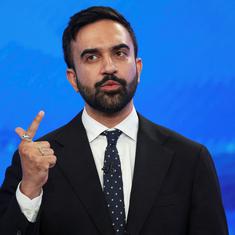New Zealand’s semi-final against England in the 1995 Rugby World Cup was hardly the tight, physically exhausting battle witnessed in the 2019 edition.
The All Blacks crushed the English in what was a performance that was important, not only to for the hulking winger Jonah Lomu, but for the sport of rugby as a whole. Lomu, all of 19 at the time, single-handedly pulverized the experienced English side in Cape Town as New Zealand marched into the final.
Lomu’s early try has earned somewhat of an iconic following over the years. He brushed aside Tony Underwood and Will Carling before flattening Mike Catt to complete the try. Going from strength-to-strength from that effort, he added three more tries as New Zealand romped to an easy win.
It was easy to see how why Lomu was such a terror to opponents. He was 6’5, weighed 115kg and galloped at a pace that would have given the best of Olympic sprinters a run for their money. He was just entering his twenties and had the world at his feet. New Zealand could not get past a resilient, tactically sound South African side in the final, but Lomu, with just one tournament had well and truly arrived.
Lomu scored seven tries in five matches, two in the first match against Ireland in Johannesburg, a try in the quarter-final against Scotland at Loftus Versfeld, and four tries in the semi-final against England at Newlands.
Many observers have attributed the sport’s popularity growing in stature with Lomu’s exploits on the field. Now, rugby too had its own poster boy. Son of Tongan migrants, the Auckland-born impressed across age groups and the sevens teams. It didn’t take long for him to break into the New Zealand first team, becoming the youngest from his country to earn a Test cap.
Apart from scoring, Lomu’s powerful runs would often put his teammates in space. He had a deft body swerve and possessed oodles of power. He was occasionally seen in scrums as well, helping out the forward pack.
“He was huge, he was quick and he was skilful. In a sport of physicality and confrontation – a massive advantage – the All Blacks made brilliant use of his presence,” South Africa’s 1995 hero Joel Stransky told CNN.
“To play against him was more stressful than you can imagine. Not just because one would need to tackle Jonah, which was not an inviting thought, but he drew defenders to him, which left other great players around him in space. Jonah’s presence changed defensive structures and strategies forever.”
Lomu was on video game covers and inspired a generation of kids to take up the sport all over the world. There was, of course, a multi-million offer from USA’s National Football League too. In New Zealand, there was even a McDonalds burger named after him. In what was a stark contrast on his on-field image, the gangly Lomu was soft-spoken and affable, something that his teammates vouch for.
“There was an elegant and eloquent side to Jonah that also set him apart,” Lomu’s teammate Taine Randell told Sydney Morning Herald.
“Again, it was almost contrary to the image everyone had of the blockbusting rugby player. He really was a wonderful, caring person who was happy to use his fame and talent to help others.”
Despite all the magic that Lomu could produce for his side, in 1999, New Zealand yet again failed to win the World Cup. There were more solid displays in 2000 and 2001, including scoring the winning try in what is now called the ‘match of the century’ against Australia. But these were mere footnotes of the kind of lasting impact Lomu left in a viewer’s collective consciousness.
His greatness lied in taking the sport to the far corners of the world. Even if you didn’t know rugby, you had to know Jonah.
“The reason every youngster wanted to play rugby growing up was because they saw Jonah Lomu play. He made rugby into what it is today,” Tana Umaga, another former teammate said.
Unfortunately, Lomu suffered from a kidney disorder since 1995 and had started to hamper his career. From the late-nineties till the time he announced international retirement, Lomu took frequent breaks to get his condition treated. He even tried to engineer a comeback in 2005 after completing a kidney transplant but could not find the form of his early years in rugby.
After bidding adieu to the game, Lomu tried his hand at amateur bodybuilding and also toyed with the idea of taking to boxing but his health worsened. On November 18, 2015, Lomu died in his hometown after suffering a heart attack related to his ailment, aged just 40 and is survived by his wife and two sons.
Despite his health struggles, Lomu had reached places that no rugby player even dared to go before him. Despite making a mockery of his hapless opponents while running at them like a freight train, he earned their respect and adulation.
He had a whopping 15 tries in World Cups, a record he shares with South Africa legend Bryan Habana. Importantly, he entered the pantheon of Sir Don Bradman, Muhammad Ali, Tiger Woods, Diego Maradona and Usain Bolt with respect to what they were in their chosen disciplines. The starting point of Lomu’s legacy was the trail of destruction he left in the 1995 World Cup.
Watch Jonah Lomu’s Rugby World Cup goals here:










